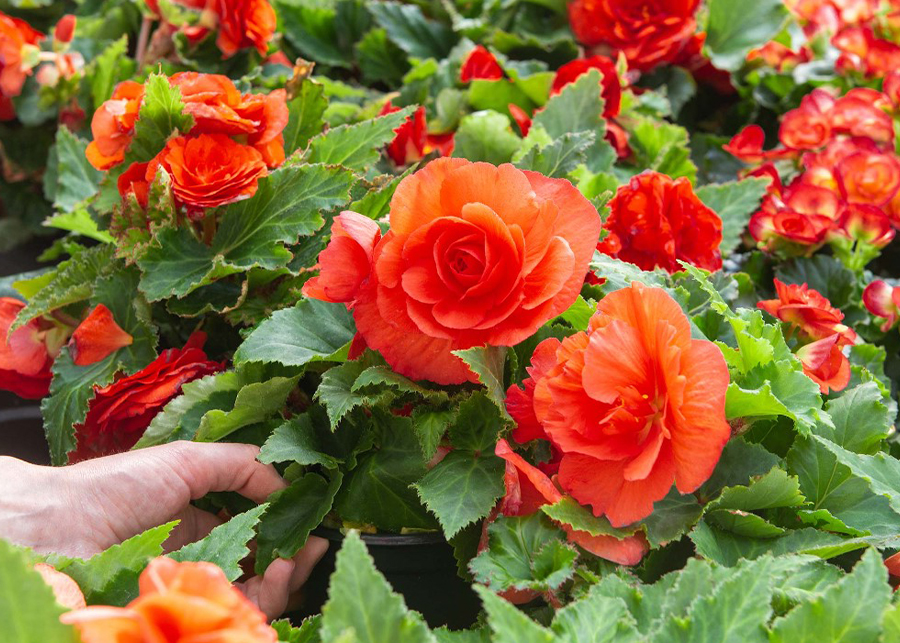Rieger Begonia is an evergreen, winter-flowering plant. This beautiful plant can be susceptible to a few pests, but following a few simple care tips will ensure your plant lives a long and healthy life during its lifetime. This type of begonia can be grown either indoors or outdoors.
The Rieger Begonia is a hardy winter-flowering plant that can be grown either indoors or outdoors. This beautiful plant can be susceptible to some pests, but can be kept safe by following a few basic care tips. For best results, this plant should be grown in indirect light with a dark, shady area.

Rieger begonia is a winter-flowering plant
The Rieger begonia is a low-maintenance perennial that blooms during the winter months. The plant can be grown in regular potting soil or peat moss. It should be fed once a month with water – soluble flower or houseplant fertilizer. Once the flowering season is over, the plant should be pruned back to about three inches and re-potted.
The Rieger begonia, also known as the Elatior begonia, is a very pretty plant. It has creamy white blooms and grows quickly. This plant is generally grown indoors as a houseplant. It grows best in soil that dries quickly and provides indirect light.
It can be grown indoors or outdoors
Rieger Begonias are easy to propagate. They do best in a semi-shaded spot, with a light source. Dig a hole slightly larger than the root ball, and plant the plant. Carefully mix soil around the roots to keep them moist. Water regularly after transplanting. If it is being grown indoors, it should have partial shade and bright indirect light.
Rieger begonias grow well from cuttings. They can grow up to three inches in height. After blooming, they should be trimmed back to a few inches. They can be re-potted, but do not transplant them during blooming. This could cause the buds to fall off. Repotting a Rieger begonia should be done once the blooming season is over. New growth usually emerges around spring.
It is susceptible to pests
Rieger Begonia plants can be susceptible to a wide variety of pests, including aphids, whiteflies, and spider mites. However, they don’t require repotting, and can be propagated via stem cuttings. To propagate a Rieger Begonia, choose a stem with healthy leaves and cut it just below the leaf node. Next, place the cutting in well- draining potting mix. Wait about six weeks and the cutting will grow.
Rieger begonias are susceptible to Aphelenchoides fragariae, which attacks 13 varieties. The bacteria live in dead leaves and can live up to a year. These bugs are also attracted to overhead irrigation. However, there are several ways to prevent these pests from affecting your Rieger begonia.
It needs indirect light
If you live in a place where you cannot get filtered sunlight, consider moving your Rieger Begonia to a window that receives bright indirect light. Alternatively, you can place the plant near a south – facing window. Direct sunlight can burn the leaves. It also needs regular watering. However, you must not overwater it as this can cause
fungal diseases and water spots.
Rieger Begonias prefer part shade or partial sun. They require about two to six hours of light a day. Avoid placing them near a window where direct sunlight can burn the leaves. They also prefer moderate temperatures, ranging between 60 to 70 degrees Fahrenheit. Because of this, they are a great choice for nearly any home climate. You can even plant them in the winter!

It needs high phosphorus fertilizer
Rieger begonias like a medium-phosphorus fertilizer, such as 15-30-15, and should be fertilized once a week during the growing season. They should be allowed to rest during the winter months. The higher the phosphorus content of the fertilizer, the more vigorously your plants will grow.
In addition to a high- phosphorus fertilizer, Rieger begonias require moderate humidity. To provide adequate humidity for your plants, place them in a window with a south- facing exposure. Avoid putting the plants in direct sunlight, as this can cause damage to the leaves. Rieger begonias also require regular watering. If you can, water them from the base rather than the leaves, and avoid watering them too deeply. This will prevent water spots and fungal disease.
The Rieger Begonia is susceptible to many pests and diseases, so you should keep a close eye on it. Some common problems include scale, aphids, and mealybugs. The latter can cause problems, including wilting and yellowing leaves.
Propagating Rieger Begonia Result
For best results, this plant should be grown in indirect light with a dark, shady area. If this plant can’t be grown outdoors, it will need access to a very sunny window during the warmer months. During the winter, consider transferring it to a bright, sunny window if possible. Remember that when choosing a container for Begonia semperflorens Rieger, size and drainage holes are both important considerations. Use a container at least 12 inches deep.








